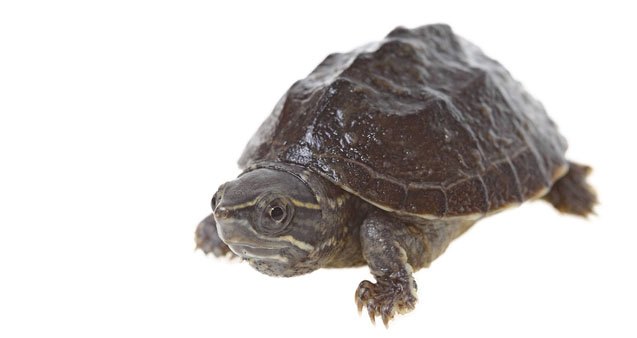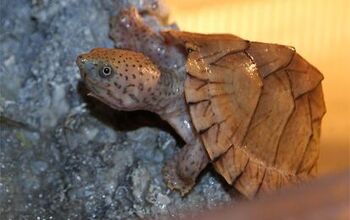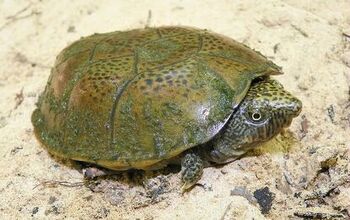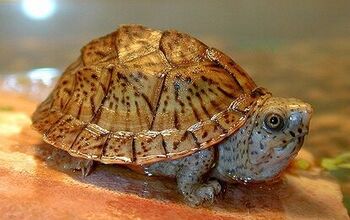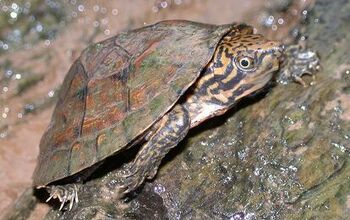Common Musk Turtle


About Common Musk Turtle
The Common Musk Turtle is also known as the Stinkpot Turtle because these animals can emit an offensive, foul odor from the glands that are located at the corners of their plastron. Along with this odor comes an orange colored liquid. However, that usually only happens when these turtles are startled or frightened, so if your pet Common Musk Turtle is content, and if he has gotten used to being handled, he won’t feel the need to emit this liquid and odor.
The Common Musk Turtle is known as the Stinkpot Turtle because they can emit an offensive, foul odor.
Common Musk Turtles are found in the eastern parts of North America, all the way from Ontario down to Florida. They are also found in habitats extending to the west, into Wisconsin and Texas.
These turtles are typically located in river habitats, as well as slow-flowing portions of streams. They can also be found in ponds and lakes.
When looking at a Common Musk Turtle, you will notice that it features a blackish-brown colored carapace that is also highly domed and has a vertebral keel, while the plastron is smaller. The keel typically flattens in adults, but it will be highly prominent amongst Common Musk hatchlings and juveniles.
In addition to the blackish-brown carapace, the Common Musk Turtle also features a pair of yellow stripes that run parallel to one another on the animal’s head. These extend all the way from the neck to the nose, and they will begin fading in intensity as the turtle ages.
Common Musk Turtles make great pets if you know how to handle them.
You do not need to provide a Common Musk Turtle with substrate, so you can stick with a tank that has a bare bottom that will be easier to clean on a regular basis. However, if you want to create an attractive and natural looking tank for your pet, you can add some medium sized gravel to the bottom, though this is optional and not a requirement.
Your turtle’s tank should be at least 20 gallons, and it should have a submersible canister water filter. One adult Stinkpot turtle can live in this enclosure, so if you wanted to keep a pair of these turtles, you would need a 40-gallon tank with a stronger underwater filter.
Fill your turtle’s tank with non-chlorinated water. The water should be deep enough that your pet’s hind legs can touch the bottom while being able to stretch a bit and breathe at the surface. The turtle shouldn’t have to paddle constantly.
Your turtle might not leave the water, but you should still provide a floating dock or area where he can bask if he chooses to do so. Provide a basking light and place it above the area of the tank where the animal would normally bask.
Set the basking temperature to around 90°F, and set the ambient air temperature in the tank to around 85°F by using a ceramic heat emitter. Set the water temperature to 72-78°F using a submersible heater.
To keep your turtle healthy, he will need exposure to UV rays from UVB bulbs. Keep these lights on for 12 hours and turn them off for the remaining 12 hours of the day.
If you want to keep more than one Common Musk Turtle, you can get one female and one male.
In the wild, the Common Musk Turtle will feast on a varied diet. For example, these turtles will enjoy eating mollusks, snails, and crayfish, and will even attack small tadpoles. They also enjoy eating both aquatic insects and terrestrial insects that end up falling into their water, such as damselfly nymphs and dragonflies.
Every now and then, these turtles also like to eat plants, such as duckweed and Elodea species. Your pet turtle can also feast upon some fish that has been cut up into small pieces, as well as shrimp, earthworms, bloodworms, and crickets.
To ensure that your pet gets all of the nutrition that he needs, you can also provide him with a commercial pelleted diet for turtles.
Common Musk Turtles make great pets, but because they can emit an offensive liquid and odor as a defense mechanism, and because they will sometimes try to bite you, you should be careful when you handle them. You don’t want to frighten these turtles, and you should make it a point to keep your fingers towards the animal’s rear in order to reduce the odds that you will get bitten. These turtles do have flexible, long necks that can allow them to bite you easily, so beware.
If you want to keep more than one Common Musk Turtle, you can get one female and one male. Keeping two males in the same enclosure isn’t recommended. But if the male shows too much interest in the female or starts to harass her, the two should be separated.
As with all other turtle breeds, it is best to introduce a captive-bred Common Musk Turtle to your family, as these turtles may be less frightened of people and more accustomed to handling.
Photo credit: jesue92/Bigstock

Lisa Selvaggio is a freelance writer and editor, and our resident cats-pert, with certifications in pet nutrition and pet first aid. She enjoys producing content that helps people understand animals better so they can give their pets a safe and happy home.
More by Lisa Selvaggio



